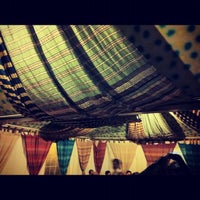See all Attractions in Palermo
Museo Archeologico Regionale Antonio Salinas
Piazza Olivella 24About
This is one of the grandest archaeological museums in Italy, stuffed with artifacts from prehistoric times to the Roman era. Spread over several buildings, the oldest from the 13th century, the museum's collection includes major Sicilian finds from the Phoenician, Punic, Greek, Roman, and Saracen periods, with several noteworthy treasures from Egypt. Even though some of the exhibitions appear shabby and the museum is definitely not state-of-the-art, its treasures are worth wading through the dust to see. You'll pass through small cloisters on the ground floor, centered on a lovely hexagonal 16th-century fountain bearing a statue of Triton. In room 3 is some rare Phoenician art, including a pair of sarcophagi that date from the 5th century B.C. In room 4 is the Pietra di Palermo, a black diorite slab known as the Rosetta stone of Sicily. Dating from 2700 B.C., and discovered in Egypt in the 19th century, it was intended for the British Museum. Somehow, because of red tape, it got left behind in Palermo. It contains carved hieroglyphics detailing information about the pharaohs, including the delivery of 40 shiploads of cedarwood to Snefru. The most important treasures of the museum, in room 13, are the metopes of Selinunte. These finds were unearthed at the temples of Selinunte, once one of the major cities of Magna Graecia (Greek colonies along the coast of southern Italy). The Selinunte sculptures are remarkable for their beauty, casting a light on the brilliance of Siceliot sculpture in general. Displayed are three magnificent metopes from Temple C, a quartet of splendid metopes from Temple E, and, in the center, a 5th-century bronze statue, Ephebe of Selinunte. These decorative friezes cover the period from the 6th century B.C. to the 5th century B.C., depicting such scenes as Perseus slaying Medusa, the Rape of Europa by Zeus, and Actaeon being transformed into a stag. Etruscan antiquities grace rooms 14 to 17. Discoveries at the Tuscan town of Chisu, such as the unearthing of funereal cippi (stones), shed more light on these mysterious people. The Oinochoe Vase, from the 6th century B.C., is one of the most detailed artifacts of Etruscan blackened earthenware (called bucchero). Other exhibit halls on the ground floor display underwater archaeology, with the most complete collection of ancient anchors, mostly Punic and Roman, in the world. Finds from Greek and Roman sites in western Sicily are to be seen on the second floor in rooms 2 and 12. Here are more artifacts from Selinunte and other ancient Sicilian sites such as Marsala, Segesta, Imera, and Randazzo. These include funereal aedicules (openings framed by two columns, an entablature, and usually a pediment), oil lamps, and votive terra cottas. In room 7 is a remarkable and rare series of large Roman bronzes, including the most impressive, a supremely realistic bronze Ram, a Hellenistic work from Syracuse. It's certainly worth the climb up the steps. Another notable work here is Hercules Killing the Stag, discovered at Pompeii, a Roman copy of a Greek original from the 3rd century B.C. In room 8, the most remarkable sculpture is Satyr Filling a Drinking Cup, a Roman copy of a Praxitelean original. On the third floor is a prehistoric collection along with Greek ceramics, plus Roman mosaics and frescoes. The highlight of the collection is panels illustrating Orpheus with Wild Animals, from the 3rd century A.D.





